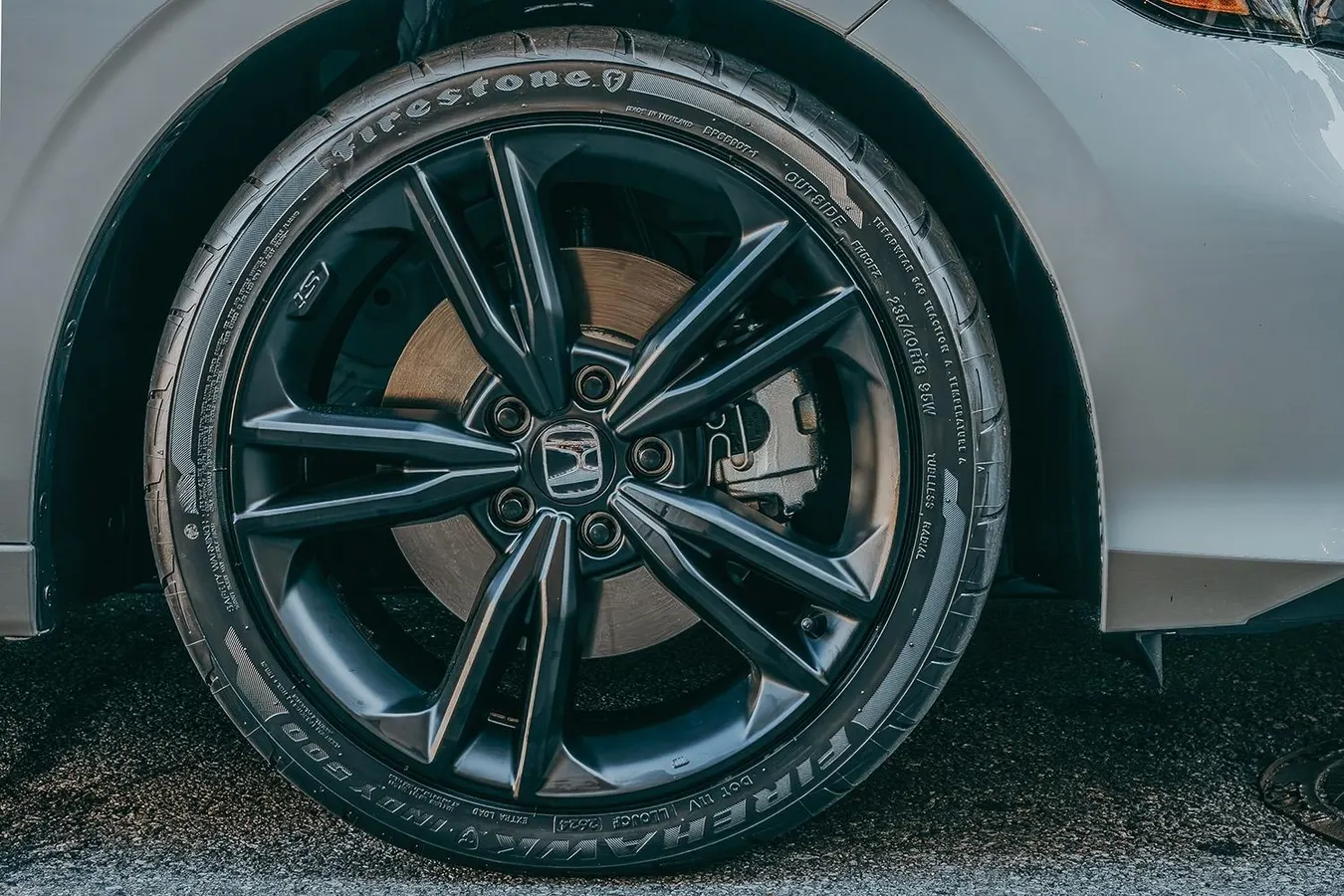By Contributor,Michael Harley
Copyright forbes

Race-inspired technology for maximum performance in wet and dry
The Firestone Firehawk INDY 500 on a 2026 Honda Civic Si
©2025 Firestone
Tires are often compared to shoes because they serve as the sole contact points between a vehicle or person and the ground. Like shoes, tires are made in different designs and materials for specific conditions, and choosing the right ones for your vehicle enhances handling and overall driving performance.
As a driving enthusiast, I seek out “performance summer” tires—the equivalent of athletic shoes—engineered to deliver superior grip and performance in warmer temperatures. Recently, I drove a sports car equipped with Firestone Firehawk INDY 500, an ultra-high-performance summer tire designed with race-inspired technology for maximum performance in both wet and dry conditions. I came away impressed.
Firestone is a century-long leader in tire technology and automotive racing, thus explaining how the INDY 500 got named—it is a tribute to the company’s long and celebrated history at the Indianapolis 500. Firestone has been a key supplier and race-winner since the first Indy 500 in 1911, and over 54 winning cars have used Firestone tires at the Indianapolis Motor Speedway event (more than any other brand).
Tires are complex engineering products composed of multiple specialized layers—including steel, synthetic and natural rubber, textiles, and various chemicals and materials—designed to optimize performance, durability, and safety. The Firehawk INDY 500’s internal structure features a high-turnup polyester casing (2-ply in some sizes) beneath twin high-tensile steel belts and nylon reinforcement—this provides responsive handling, stability, and high-speed capability. To enhance grip, the tire uses a new, high-performance, silica-enhanced Long Link Carbon (a high-structure carbon black filler that has a unique particle size, surface area, and structure to reinforce the rubber matrix effectively) tread rubber compound.
The tire’s tread, much like the tread on the shoe, plays a significant part in how it interacts with the road surface and weather. The INDY 500 tread compound is molded with an asymmetric tread design with large independent shoulder blocks (these are designed to improve cornering and handling in dry conditions). And the center circumferential groove features proprietary Pulse Groove Technology (enhancing water evacuation), which combines with two additional circumferential grooves to provide shorter stopping distances in the wet. Firestone notes that, like all summer tires, Firehawk Indy 500 tires are not intended to be driven in near-freezing temperatures, through snow, or on ice. The tire carries a UTQG (Uniform Tire Quality Grade) rating of 340 AA.
Note the asymmetric tread design with large independent shoulder blocks on the Firestone Firehawk INDY 500
© Dave Hawkins Photography 2015
MORE FOR YOU
I’ve tested the Indy 500 tires on a Volkswagen GTI and a Honda Civic Si. These are two performance-oriented front-wheel drive vehicles that share similar marketing positions—both are slotted below the highest-performing model (the Golf R and Civic Type R, respectively). Compared to the factory all-season tires—the tire equivalent of casual shoes made for everyday driving—the ultra-high-performance Firestones felt immediately better.
Initial turn-in, the vehicle’s first response when the driver begins to steer into a corner, felt crisper and more accurate—likely due to the reduction of squirmy tread blocks and the Firestone’s firmer sidewalls. Lateral grip, in the corners, was also much higher and more stable—and the tires didn’t “howl” (tire squeal) in protest. When I reached the limit of adhesion, they broke away predictably (understeer, as both vehicles carry most of their weight on the nose), and I could control the vehicle’s trajectory without worry. And braking distances also felt shorter, as the tires gripped the road with tenacity (the brakes on the Civic Si smoked noticeably, clearly indicating that they were getting a workout). In both cases, I found that the Firestone ultra-high-performance summer tires elevated the handling, lateral grip, and braking capabilities of the vehicle, which moved the performance bar significantly closer to its respective flagship model.
Curious to see if others have had the same experience, I visited the Tire Rack website—the company compiles thousands of real-world consumer reviews on tires. The owner of a 2009 MINI Cooper S Hardtop in Virginia gave the Indy 500 tires a high 4.3 rating (out of 5): “Great tires at a great price point. I do a lot of spirited driving and carving corners at high speeds, and these tires just stick to the road. They have not disappointed me, and even in wet weather, there is a lot of confidence when cornering on wet roads. I highly recommend the Firestone Firehawk Indy 500 tires to anyone looking for a really solid, fairly inexpensive performance tire.” The owner of a 2008 BMW M5 in South Carolina gave the tires a 4.4 rating: “This is a great tire. I have as much dry traction as I need, and I’m always surprised by how much wet traction I have. So far, with 10k miles on the tires, wear is good. Based on what they look like now, I would expect to get another 10k out of them. For reference, most of my driving is on highways or surface street driving with a couple of nice on/off ramps on my way to and from work. I don’t really notice them being to [sic] loud or uncomfortable. I would definitely consider getting another set when these where [sic] out.”
Remarkably, I found many reviews from owners of vehicles not classified as “sporty.” These drivers chose the Indy 500 tire to enhance their vehicle’s performance, and most were very satisfied with the results. One owner of a 2014 Mazda Mazda6 Touring in Iowa gave the tire a 4.4 rating: “These tires have been nothing short of amazing so far. Road noise is average, wet traction is considerably better than my old Toyo’s, and dry traction is consistent and very grippy. The limit of these tires is pretty high but once you do reach the limit, they slip in a very controlled, manageable, and consistent manner… overall, these tires are awesome. I’m highly impressed, especially with traction in very wet conditions. I absolutely recommend.”
A tire upgrade isn’t worthwhile if it strains your budget. Fortunately, the Firestone Firehawk INDY 500 costs significantly less than many comparable summer performance tires. For example, on Tire Rack, a set of four Firehawk INDY 500 tires for a hypothetical 2023 Volkswagen GTI costs about $300 less than a set of similar Michelin Pilot Sport 4S tires and nearly $200 less than a set of Pirelli P Zero tires—those are significant savings that an owner can use towards a vehicle payment, maintenance, or modifications.
Driving enthusiasts have a lot of choices when it comes to replacing tires on their vehicles. For those seeking an aftermarket replacement that improves their vehicle’s driving dynamics and performance, I recommend checking out the Firestone Firehawk INDY 500.
Editorial StandardsReprints & Permissions



